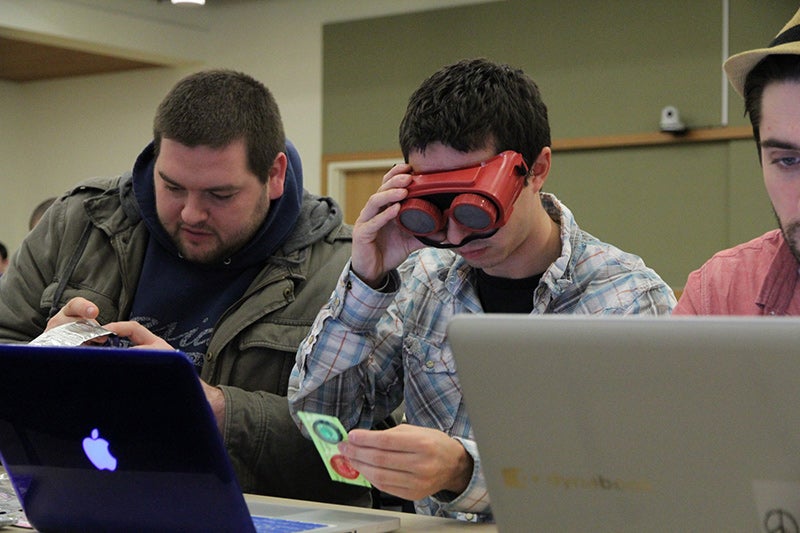A story in the current Men’s Journal features research by a UO Product Design Program class on how to design a next-generation condom. In a classroom laboratory, the students tested seventy different condoms on twenty attributes. The research was part of the interdisciplinary class “Epic Challenges: Solving Massive Problems through Design Thinking,” taught winter 2014 by Product Design Program Director Kiersten Muenchinger and Digital Arts Program Instructor John Park. Muenchinger is the Tim and Mary Boyle Chair in Material Studies and Product Design at the University of Oregon.
“Until there's a revolution in condom technology, you'll have to put in your own efforts to figure out what you prefer. If you don't know where to start, here are the condoms that did best in University of Oregon's tests," Men’s Journal writer Taylor Kubota notes.
Kubota’s story, “The 15 Best Condoms According to Science,” features a slideshow documenting which condoms were rated highest by the student researchers, including “best for speed,” “best sound,” “best lubricant,” and “best for using with visual impairment,” among other attributes.
The UO class, part of the year-long Koehn Colloquia, was offered in response to a challenge by the Bill & Melinda Gates Foundation to design a “next generation condom that significantly preserves or enhances pleasure, in order to improve uptake and regular use.”
The Men’s Journal story also links to a A&AA story about the class research and a separate link to the Product Design Program.

Above: Using visual impairment goggles, a student prepares to test how long it takes to don a condom in simulated darkness. Photograph by Jack Liu.
